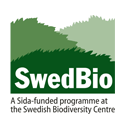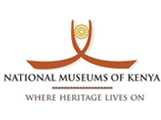Click on images to enlarge
/thumbs/senna_occidentalis5_-_CG_sml.jpg)
flowers and young fruit (Photo: Chris Gardiner)
/thumbs/senna_occidentalis7_sml.jpg)
close-up of immature fruit (Photo: Sheldon Navie)
/thumbs/senna_occidentalis6_sml.jpg)
close-up of elongated mature fruit (Photo: Sheldon Navie)
/thumbs/senna_occidentalis4_-_CG_sml.jpg)
habit (Photo: Chris Gardiner)
/thumbs/senna_occidentalis2_-_FKS_sml.jpg)
close-up of flower (Photo: Forest and Kim Starr, USGS)
/thumbs/senna_occidentalis2_-_CG_sml.jpg)
once-compound leaves with pointed tips (Photo: Chris Gardiner)
/thumbs/senna_occidentalis18_sml.jpg)
mature fruit (Photo: Sheldon Navie)
/thumbs/senna_occidentalis15_sml.jpg)
young plant (Photo: Sheldon Navie)
/thumbs/senna_occidentalis14_sml.jpg)
close-up of leaflet undersides (Photo: Sheldon Navie)
/thumbs/senna_occidentalis13_sml.jpg)
close-up of leaflets (Photo: Sheldon Navie)
/thumbs/senna_occidentalis11_sml.jpg)
close-up of stem and raised glands on the leaf stalks (Photo: Sheldon Navie)
/thumbs/senna_occidentalis1_sml.jpg)
close-up of stems and old flowers (Photo: Sheldon Navie)
/thumbs/senna_occidentalis1_-_SH_sml.jpg)
close-up of seeds (Photo: Steve Hurst at USDA PLANTS Database)
/thumbs/senna_occidentalis1_-_CG_sml.jpg)
habit (Photo: Chris Gardiner)
Scientific name
Senna occidentalis (L.) Link
Synonyms
Cassia occidentalis L.; Senna occidentalis (L.) Roxb.; Senna occidentalis var. sophera (L.) X.Y. Zhu
Common names
Coffee senna, ant bush, antbush, arsenic bush, negro coffee, Nigerian senna, septicweed, sickle pod, stink weed, stinking pea, stinking weed, stinkingweed, stinkweed, styptic weed.
Family
Fabaceae (Leguminosae): sub-family Caesalpinioideae
Origin
Native to the tropical and subtropical regions of the America.
Naturalised distribution (global)
Locations within which Senna occidentalis is naturalised include Australia, southern and eastern USA and eastern Africa.
Introduced, naturalised or invasive in East Africa
Senna occidentalis is invasive in parts of Kenya (Dawson et al. 2008), Uganda and Tanzania (Global Invasive Species Database, A.B.R. Witt pers. obs.).
Habitat
A weed of roadsides, waste areas, disturbed sites, pastures, grasslands, open woodlands, coastal environs and crops in tropical, subtropical and semi-arid regions.
Description
Senna occidentalis is an unarmed slender upright and short-lived (annual or biennial) shrub, 0.5-2.5 m tall, distinguished by foetid odour.
Its once-compound leaves consist of 3-7 pairs of leaflets (2-10 cm long and 2-3 cm wide) that have pointed tips. A mounded gland at base of leaf stalk, no glands between leaflets.
There is a conspicuous dark-coloured gland near the base of the stalk of each leaf.
Its flowers (2-3 cm across) have five yellow petals and are borne in small clusters in the upper leaf forks.
Its fruit is a somewhat flattened, straight or slightly sickle-shaped, pod (7.5-13 cm long and 8-10 mm wide).
This species gives off a foul odour when damaged.
Reproduction and dispersal
This plant reproduces entirely by seed. Seeds are dispersed by water or in mud sticking to animals, humans, machinery and vehicles. They may also be spread as a contaminant of agricultural produce.
Similar species
Senna occidentalis is very similar to S. hirsuta (hairy senna) S. obtusifolia (sicklepod), and S. septemtrionalis (smooth senna). These species can be distinguished by the following differences:
- S. occidentalis is a relatively small slender shrub (usually 0.5-2 m tall) that has leaves with several (3-7) pairs of leaflets. The relatively large leaflets (30-100 mm long) are relatively broad (20-40 mm wide) and have acute apices. Its flowers are borne in small clusters in the leaf forks and its very elongated (7.5-13 cm long) pods are rounded (cylindrical) or slightly flattened and relatively thick (6-11 mm wide). These pods are straight or slightly-curved upwards and are mostly hairless (glabrous).
- S. hirsuta is a relatively small slender shrub (usually 0.5-2 m tall) that has leaves with several (2-6) pairs of leaflets. These relatively large leaflets (40-105 mm long) are relatively broad (20-40 mm wide) and have pointed tips (acute apices). Its flowers are borne in small clusters in the leaf forks and its very elongated (10-18 cm long) pods are usually somewhat flattened and very narrow (4-6 mm wide). These pods are slightly-curved downwards and are densely covered in long white hairs (pubescent).
- S. obtusifolia is a relatively small slender shrub (usually 0.5-2 m tall) that has leaves with a few (2-3) pairs of leaflets. The relatively large leaflets (17-65 mm long) are relatively broad (15-40 mm wide) and have rounded tips (obtuse apices). Its flowers are borne in pairs in the leaf forks and the very elongated (6-18 cm long) pods are almost rounded in cross-section (cylindrical) and very narrow (2-6 mm wide). These pods are sickle-shaped and are glabrous.
- S. septemtrionalis is a moderately-sized shrub (1-3 m tall) that has leaves with several (3-5) pairs of leaflets. The relatively large leaflets (45-70 mm long) are relatively broad (15-35 mm wide) and have acute apices. Its flowers are borne in relatively loose somewhat elongated many-flowered clusters (racemes) and its elongated (6-10.5 cm long) pods are cylindrical and relatively thick (10-15 mm wide). These pods are straight and glabrous.
Economic and other uses
Senna occidentalis can be used as a coffee substitute in spite of the fact that the seeds are reported to be toxic to cattle. It has medicinal and insect antifeedant properties.
Environmental and other impacts
The ability of Senna occidentalis to spread in a wide range of environments indicates its weedy potential. It can also be a weed of annual cropping systems.
S. occidentalis is regarded as an environmental weed in Queensland, the Northern Territory and Western Australia and in seven states in the USA.
Management
The precise management measures adopted for any plant invasion will depend upon factors such as the terrain, the cost and availability of labour, the severity of the infestation and the presence of other invasive species. Some components of an integrated management approach are introduced below.
The best form of invasive species management is prevention. If prevention is no longer possible, it is best to treat the weed infestations when they are small to prevent them from establishing (early detection and rapid response). Controlling the weed before it seeds will reduce future problems. Control is generally best applied to the least infested areas before dense infestations are tackled. Consistent follow-up work is required for sustainable management.
Senna occidentalis quickly invades bare pastures so it is important to maintain a good cover of desired pasture species. S. occidentalis can be successfully controlled when in the seedling stage by cultivation. Likewise, a variety of herbicides can successfully control S. occidentalis at this stage. When using any herbicide always read the label first and follow all instructions and safety requirements. If in doubt consult an expert. Alternaria cassiae which can control S. occidentalis is commercially available as a mycoherbicide.
Legislation
Not listed as a noxious weed by the state or governments in Kenya, Tanzania and Uganda.
References
CABI Invasive Species Compendium online data sheet. Senna occidentalis (coffee senna). CABI Publishing 2011. www.cabi.org/ISC. Accessed March 2011.
Germplasm Resources Information Network (GRIN). www.ars-grin.gov/npgs/index.html. National Germplasm Resources Laboratory, National Genetic Resources Program, Agricultural Research Service (ARS), United States Department of Agriculture (USDA), Beltsville, Maryland, USA. Accessed March 2011.
Global Compendium of Weeds. www.hear.org/gcw. Hawaiian Ecosystems at Risk Project. Accessed March 2011.
Henderson, L. (2001). Alien weeds and invasive plants. A complete guide to declared weeds and invaders in South Africa. Plant Protection Research Institute Handbook No. 12, 300pp. PPR, ARC South Africa.
Lazarides, M., Cowley, K. and Hohnen, P. (1997). CSIRO Handbook of Australian Weeds. CSIRO Publishing, Collingwood, Victoria.
Pacific Island Ecosystems at Risk (PIER). Senna occidentalis (L.) Link, Fabaceae (Leguminosae): plant threats to Pacific ecosystems. www. hear.org/pier/species/senna_occidentalis.htm. Institute of Pacific Islands Forestry, Hawaii, USA. Accessed March 2011.
USDA Plants Profile. Senna occidentalis (L.) Link. Septicweed. The Plants Database. plants.usda.gov/java/profile. National Plant Data Center, National Resources Conservation Service, United States Department of Agriculture, Baton Rouge, Louisiana, USA. Accessed March 2011.
Editors
Agnes Lusweti, National Museums of Kenya; Emily Wabuyele, National Museums of Kenya, Paul Ssegawa, Makerere University; John Mauremootoo, BioNET-INTERNATIONAL Secretariat - UK.
Acknowledgments
This fact sheet is adapted from The Environmental Weeds of Australia by Sheldon Navie and Steve Adkins, Centre for Biological Information Technology, University of Queensland. We recognise the support from the National Museums of Kenya, Tropical Pesticides Research Institute (TPRI) - Tanzania and Makerere University, Uganda. This activity was undertaken as part of the BioNET-EAFRINET UVIMA Project (Taxonomy for Development in East Africa).
Contact
BioNET-EAFRINET Regional Coordinator: [email protected]












